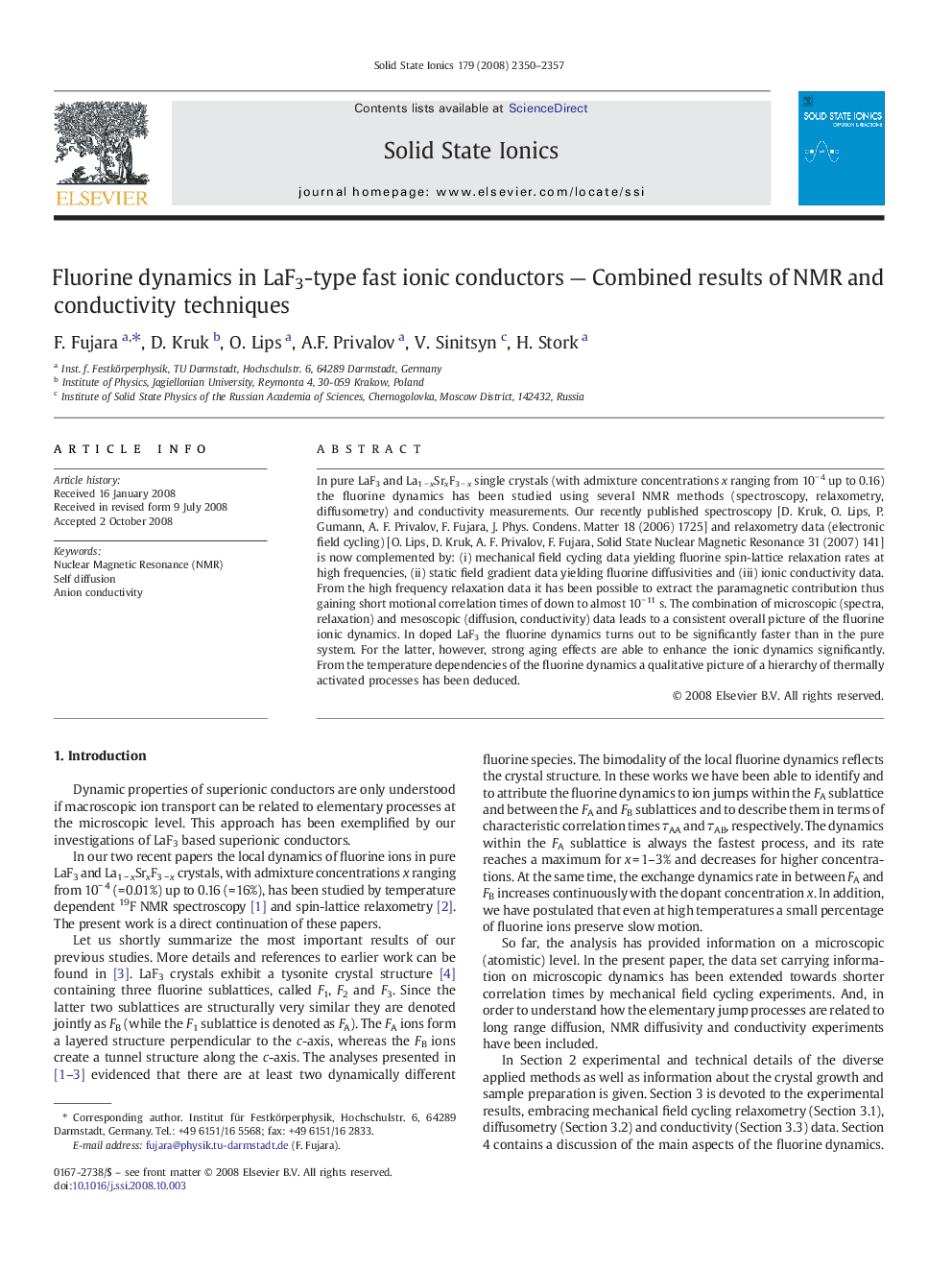| Article ID | Journal | Published Year | Pages | File Type |
|---|---|---|---|---|
| 1298656 | Solid State Ionics | 2008 | 8 Pages |
In pure LaF3 and La1 − xSrxF3 − x single crystals (with admixture concentrations x ranging from 10− 4 up to 0.16) the fluorine dynamics has been studied using several NMR methods (spectroscopy, relaxometry, diffusometry) and conductivity measurements. Our recently published spectroscopy [D. Kruk, O. Lips, P. Gumann, A. F. Privalov, F. Fujara, J. Phys. Condens. Matter 18 (2006) 1725] and relaxometry data (electronic field cycling) [O. Lips, D. Kruk, A. F. Privalov, F. Fujara, Solid State Nuclear Magnetic Resonance 31 (2007) 141] is now complemented by: (i) mechanical field cycling data yielding fluorine spin-lattice relaxation rates at high frequencies, (ii) static field gradient data yielding fluorine diffusivities and (iii) ionic conductivity data. From the high frequency relaxation data it has been possible to extract the paramagnetic contribution thus gaining short motional correlation times of down to almost 10− 11 s. The combination of microscopic (spectra, relaxation) and mesoscopic (diffusion, conductivity) data leads to a consistent overall picture of the fluorine ionic dynamics. In doped LaF3 the fluorine dynamics turns out to be significantly faster than in the pure system. For the latter, however, strong aging effects are able to enhance the ionic dynamics significantly. From the temperature dependencies of the fluorine dynamics a qualitative picture of a hierarchy of thermally activated processes has been deduced.
